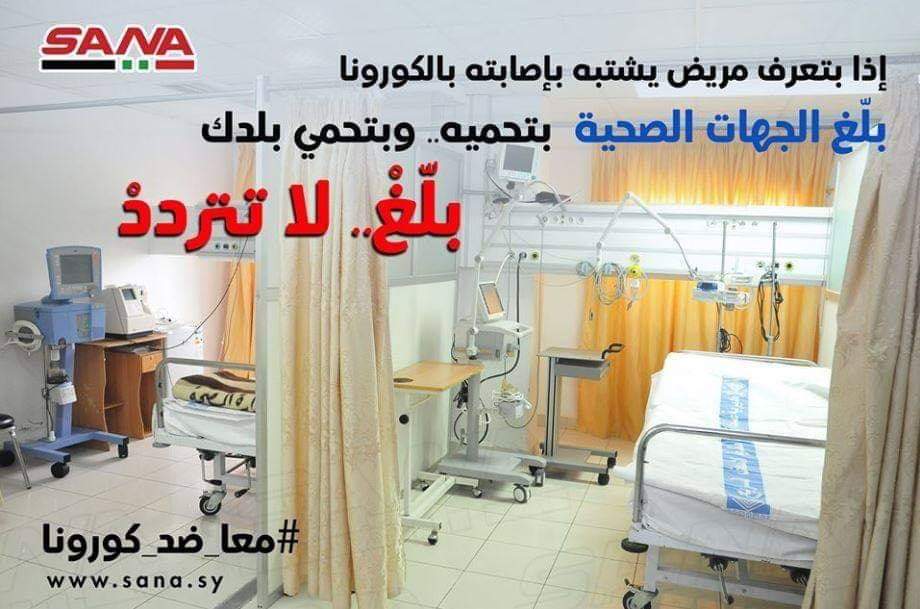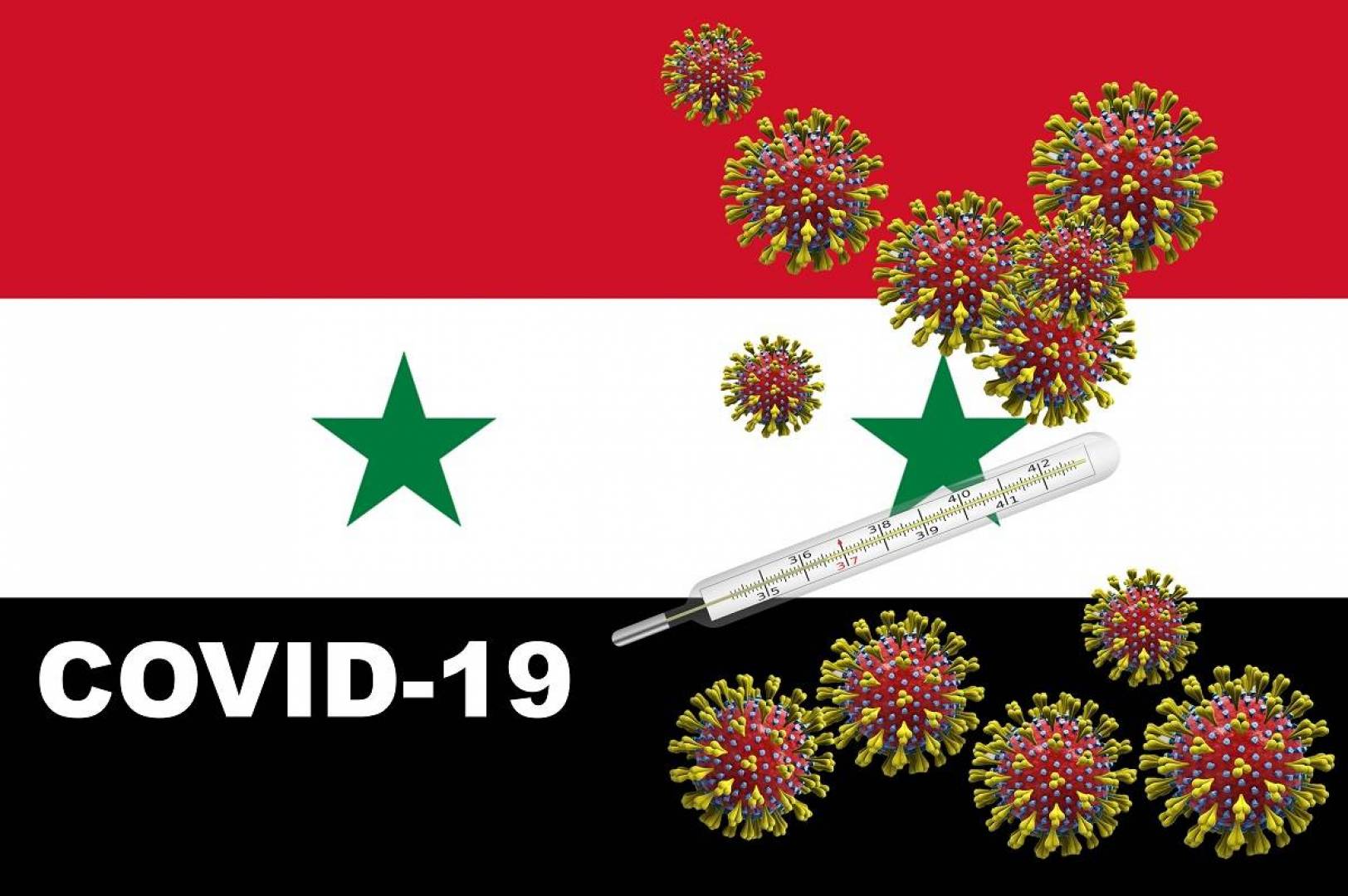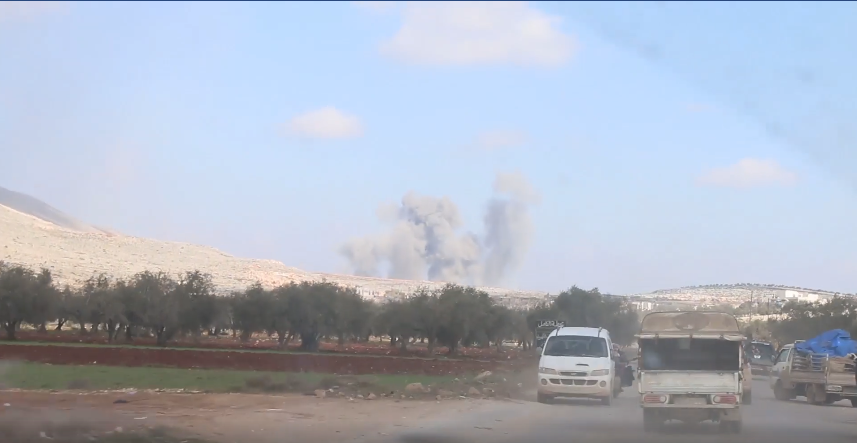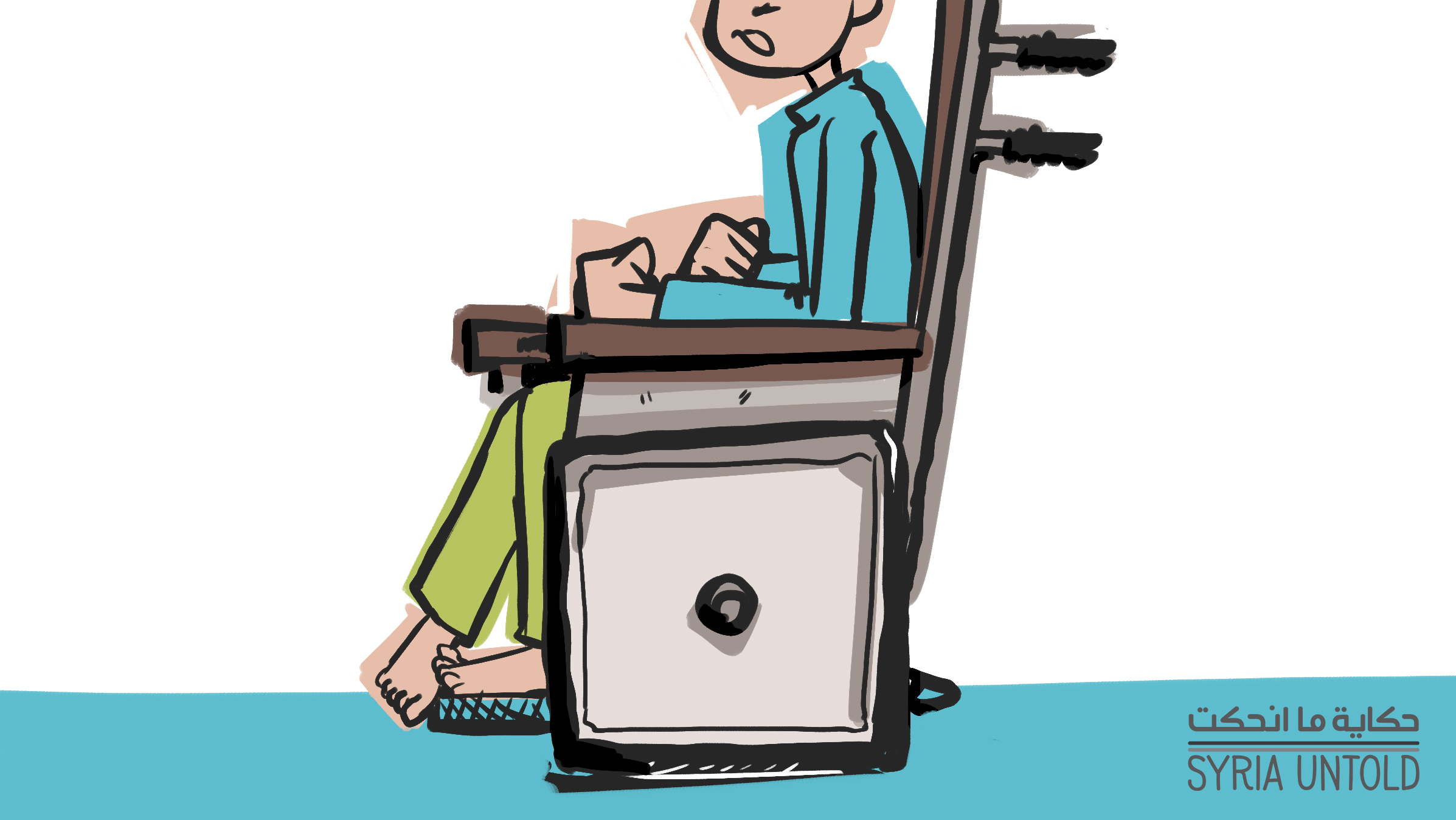According to one story from last month, several bodies were buried under cover of darkness, somewhere near the southern Syrian city of a-Suwayda, by Military Intelligence officers. The deceased had reportedly died of COVID-19 (novel coronavirus).
For weeks, the Syrian government denied the presence of the deadly virus inside Syria, with many suspecting an attempted cover-up. However, COVID-19 has become harder to hide. Countries neighbouring Syria began to report cases of infections that had recently travelled from Syria, while a women in the Damascus countryside died last week without being detected with the virus, let alone quarantined, having therefore likely infected others.
To date, according to figures from the World Health Organisation (WHO) and Syria’s Ministry of Health, Syria has confirmed 19 cases of COVID-19. Of that number, two people died while two people have fully recovered. Many suspect the true numbers to be far higher, however gaining accurate and reliable information about COVID-19 in Syria is not easy.
Here, SyriaUntold speaks to Mazen Gharibah, one of two researchers who recently published a widely shared London School of Economics study on Syria’s healthcare capacities to fend off a COVID-19 outbreak.
Gharibah, a researcher originally from Homs, discusses with SyriaUntold the current state of Syria’s COVID-19 outbreak: the numbers behind the crisis, the increasing role of intelligence agencies and security branches in controlling official responses, and the reasons why the country’s public health sector has been so degraded by nearly 10 years of war.
One of the most concerning trends, Gharibah suggests, is the ways in which Syria’s notorious security apparatus has begun to treat COVID-19 as a "security threat."
"Because people feel the regime is treating this pandemic as a security threat, or a national threat, people have started trying to hide symptoms or trying to avoid going to hospitals in order not to be questioned avoid being or interrogated," he says.
"[This] is obviously a catastrophe when you have a pandemic and people are afraid to go to hospitals to seek medical attention or declare symptoms."
Q: Your study came out around a week ago now, but a lot has happened since then. Can you, first of all, give us a bit of an update on how Syria is responding to COVID-19, and what’s been happening in recent days?
Sure. When we published our report, there were only five cases confirmed by the Ministry of Health and the WHO. However now we have 16 confirmed in Syria—two of them died and, according to the Ministry of Health, two of them fully recovered. Of course, these are the official numbers. In my opinion, they don’t reflect the reality of what’s going on inside Syria, but these are the official numbers that were published by the Ministry of Health.
[Since SyriaUntold spoke with Gharibah, the number of confirmed COVID-19 cases inside the country has risen to 19.]
The government also increased the measures they’re taking. They’re locking down not just Damascus, but all cities in Syria, so now moving from different cities is not possible anymore. There’s a partial curfew, and they also stopped Friday prayers and gatherings in mosques and churches. Schools have even shut down until further notice.
There’ve been strict measures on travelling between different cities, specifically in Damascus and around the centre of Damascus. And there’s also been an emphasis on Sit Zeinab, which his a neighbourhood inn Damascus where usually most of the Iranian and Shia pilgrims go to. There’s been specifically strict measures on this neighbourhood—and I believe the reason is because of the Iranian pilgrims…and their large numbers around these religious shrines, which is raising a lot of concerns.
The WHO also sent 300 kits to the northwest and 300 additional kits were brought by Syrian NGOs. So in total in the northwest now there’s 600 testing kits, out of 2,000 that were promised by the [WHO’s] Health Cluster Task [Team] to give to the northwest.
We’ve been hearing news that the government is also increasing the number of tests per day, but unfortunately there are no exact numbers on how many tests they’re doing or the actual results of these tests. They’re not sharing that information publicly, and they also asked doctors inside hospitals not to share information with regards to COVID-19.
In our report, we mentioned the intervention of intelligence forces in Syria. That has also increased over the past week. Intelligence agencies are now more involved in healthcare policies. They are also now have some sort of permanent presence in public hospitals to monitor the situation closely. For instance, the Zabadani Hospital, which was designated to be the hospital responsible for the COVID-19 in the Damascus countryside, there are now security officers there—they have officers inside the hospital—so they’re monitoring the situation carefully. And the other day, [state news agency] SANA, published an infograph asking people to inform the authorities of any suspected COVID-19 [case], which to me was a threatening infograph. All Syrians know what informing the authorities actually means.

So people are panicking in Syria, panic is increasing. Because people feel the regime is treating this pandemic as a security threat, or a national threat, people have started trying to hide symptoms or trying to avoid going to hospitals in order not to be questioned avoid being or interrogated.
I’ve talked to a lot of people who said that, ‘We prefer not to declare any symptoms so we won’t ave any trouble with the authorities,’ which is obviously a catastrophe when you have a pandemic and people are afraid to go to hospitals to seek medical attention or declare symptoms.
Q: Is there any information indicating which intelligence agencies or security branches are now intervening in the health sector?
It seems that at the beginning it was different branches—for instance, the Military Intelligence branch was the one responsible for responding to the pandemic in [southern Syria’s] a-Suwayda, but in other areas that was different.
Now it seem that the Political Security are the ones taking over, because they are the ones in public hospitals now. They have several offices in several public hospitals. So it seems that it’s Political Security leading this strategy from the intelligence/security forces.
That’s also what happened during H1N1 [another outbreak of novel influenza, otherwise known as ‘Swine Flu,’ that spread globally in 2009]. Then, it was Political Security involved as well.
Q: Syria isn’t the only state in the region, or the world for that matter, playing politics with this pandemic. You said the numbers weren’t representative of the reality on the ground, so what is happening on the ground that we’re not really hearing about yet?
People still talk about a potential catastrophe, or a potential spread in Syria.
But through our research, talking to our sources in different provinces in Syria, I would say that the catastrophe in Syria has already happened. The spread has already happened. This isn’t something in the future, it’s something that already happened in the past.
So these numbers are not nearly representative. We’ve been talking to doctors who’ve been raising alarms about the numbers of pneumonia-related deaths, which is higher than the average [from] previous years—we don’t have a number for this, but several doctors who we’re in touch with are talking about a drastic increase in the numbers of pneumonia-related deaths.
Also consider the fact that all the countries surrounding Syria have had a surge in the number of COVID-19 cases—Lebanon, Iraq, Iran, Turkey—and also there are several reports from Pakistan and Lebanon about cases actually coming from Syria.
Q: You mention this several times in your study, about the longstanding lack of capacity in Syria’s healthcare sector. That's really an intrinsic part of this story because one of the main risks of a COVID-19 outbreak is that it overruns a health sector to its limits.
Most people are probably familiar with the notion that the Syrian army and its allies have deliberately targeted hospitals and doctors throughout the uprising and conflict in Syria, but what about hospitals in Assad-controlled areas that never changed hands, that were never in opposition-held areas? What can you say about that slow degradation of the health sector in these areas? And why does that make COVID-19 such a threat?
As you said, [there has been] systematic destruction of health facilities in areas outside regime control for which all Syrians are now paying the price, not just opponents of the regime, because coronavirus does not acknowledge political lines. If an outbreak happened in Idlib, it will inevitably happen in Damascus and Daraa and Hama.
When it comes to health facilities in Assad-controlled areas, there are conflict-related issues, which mostly come down to things like electricity and human capital. According to the UN, almost 70 percent of Syrian doctors are either refugees or [they’re] internally displaced, so there’s a big problem with human capital [in Syria’s healthcare system] with the number of doctors and trained nurses and all of that.
But you also have issues not related to the conflict. In Syria, we’ve been living with a weak health system for a long time. The health system is not as good as many people would imagine. When you go to public hospitals in Syria, you have to wait in long queues, there’s a lot of issues with the standards in these hospitals. I do believe that Syrian doctors are qualified and they’re doing the best, and they want the same results as doctors in Idlib, for instance. But at the same time, you have high degrees of bureaucracy and centralisation when it comes to health policies, [and] these constant interferences by security branches in the health system.
Of course, the regime is politicising the current COVID-19 [outbreak] to talk about sanctions, and saying that sanctions are the main reason that they’re unable to address [the outbreak]. But anyone that knows anything about these sanctions—either the US or the EU sanctions—knows that the health system is exempt. So the regime is using COVID-19 as a political card…to say that the sanctions are to blame for all of this.
It’s not true. The main reason is the inherently bad infrastructure and also the systematic targeting of health workers and facilities.
It’s not because of the sanctions, it’s because of these actions by the Syrian regime against the health sector.
Q: At the same time, the Syrian government isn’t the only actor being accused of politicising the response in Syria. The WHO has also been criticised, particularly for how it's responded to government-held areas and opposition-held areas. How would you characterise the response of the WHO?
I believe the WHO is, knowingly or unknowingly, playing into this politicisation of COVID-19 in Syria. When a spokesperson for the WHO says that ‘we only deal with Damascus because it’s a government,’ it’s a very bad statement.
[In a New York Times article published on March 19, 2020, “‘Wash Our Hands? Some People Can’t Wash Their Kids for a Week’,” a spokesperson for the World Health Organisation, a UN agency, was quoted as saying, ‘The northwest [of Syria] is not a country’ when asked when testing kits would arrive in Idlib province after kits had already been delivered to government-held Damascus.]
It makes it seem like the WHO does not understand the basics of [working in] conflict areas, or the political reality in Syria. So they are, knowingly or unknowingly, helping the regime’s narrative.
How do you expect someone, who has been bombing hospitals until three weeks ago, to then give those same hospitals testing kits the next week? It makes no sense.








